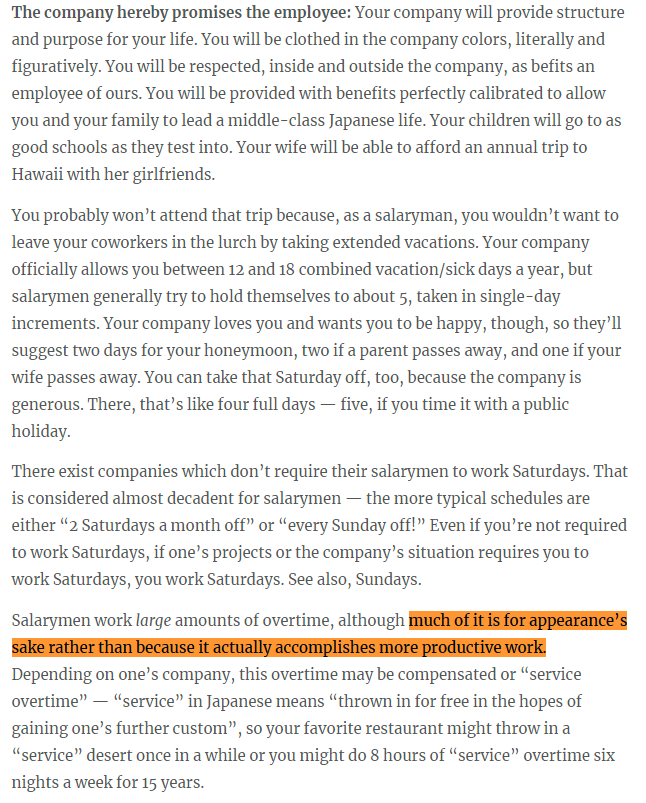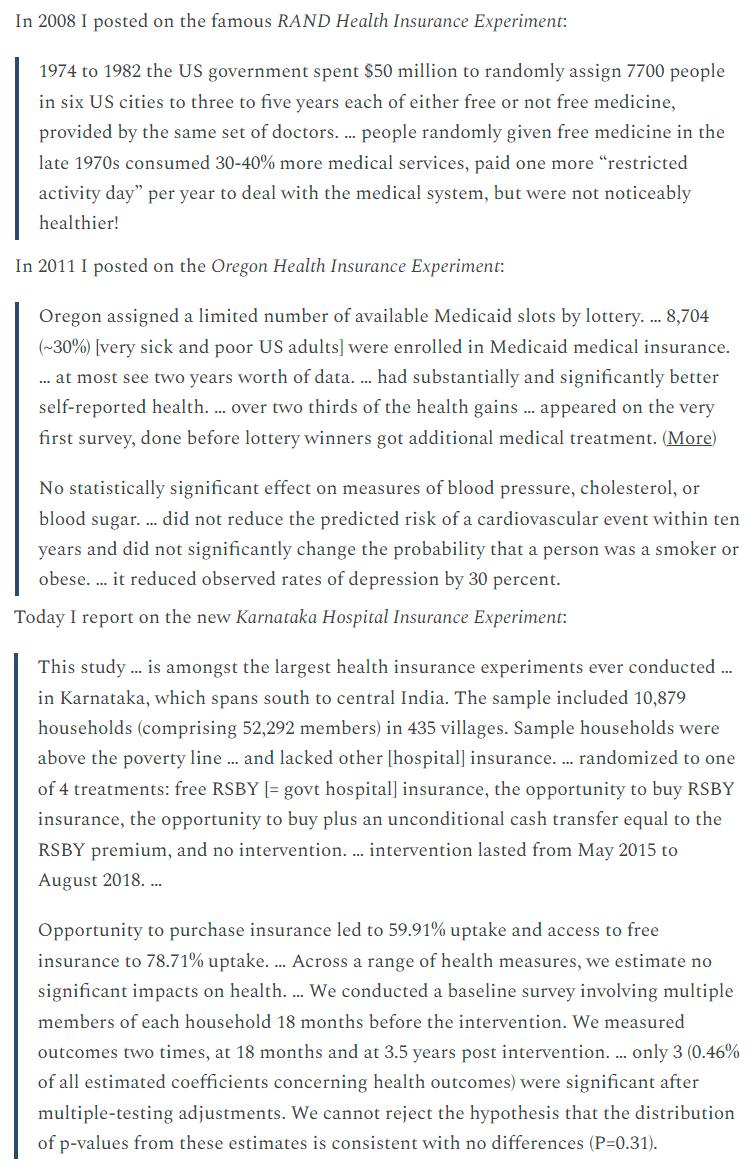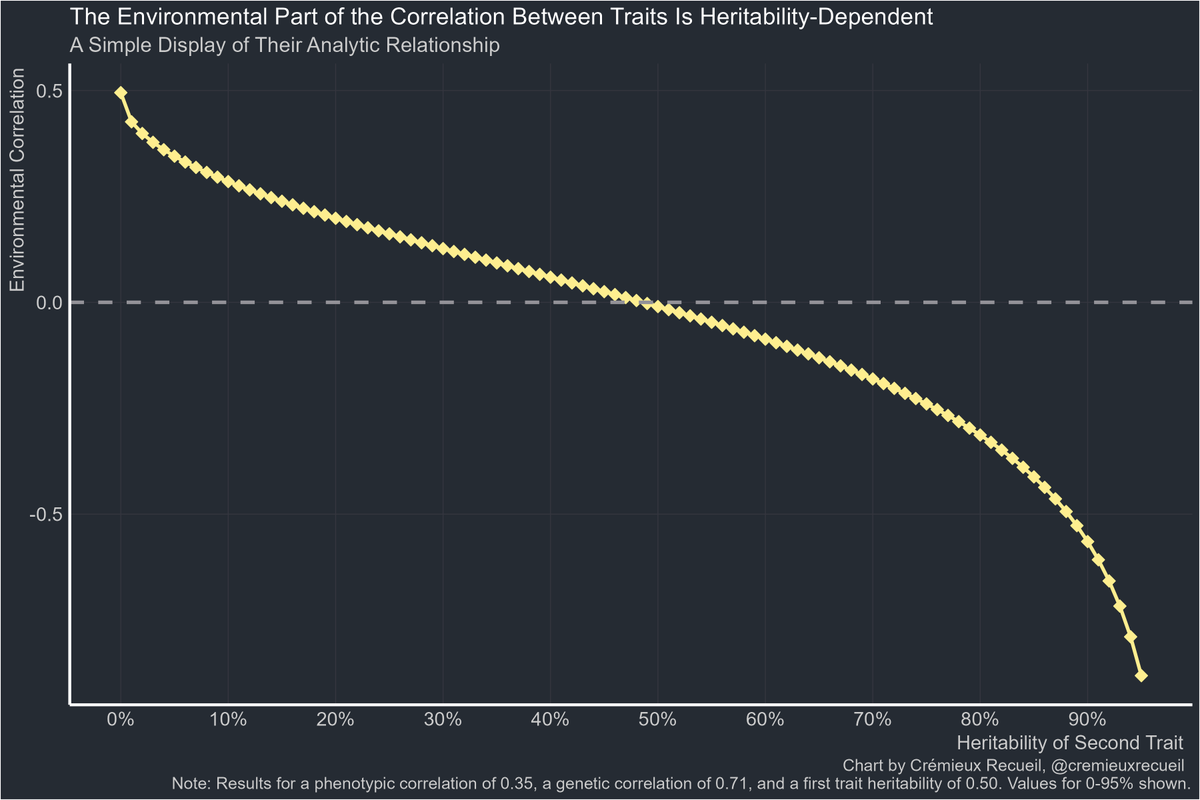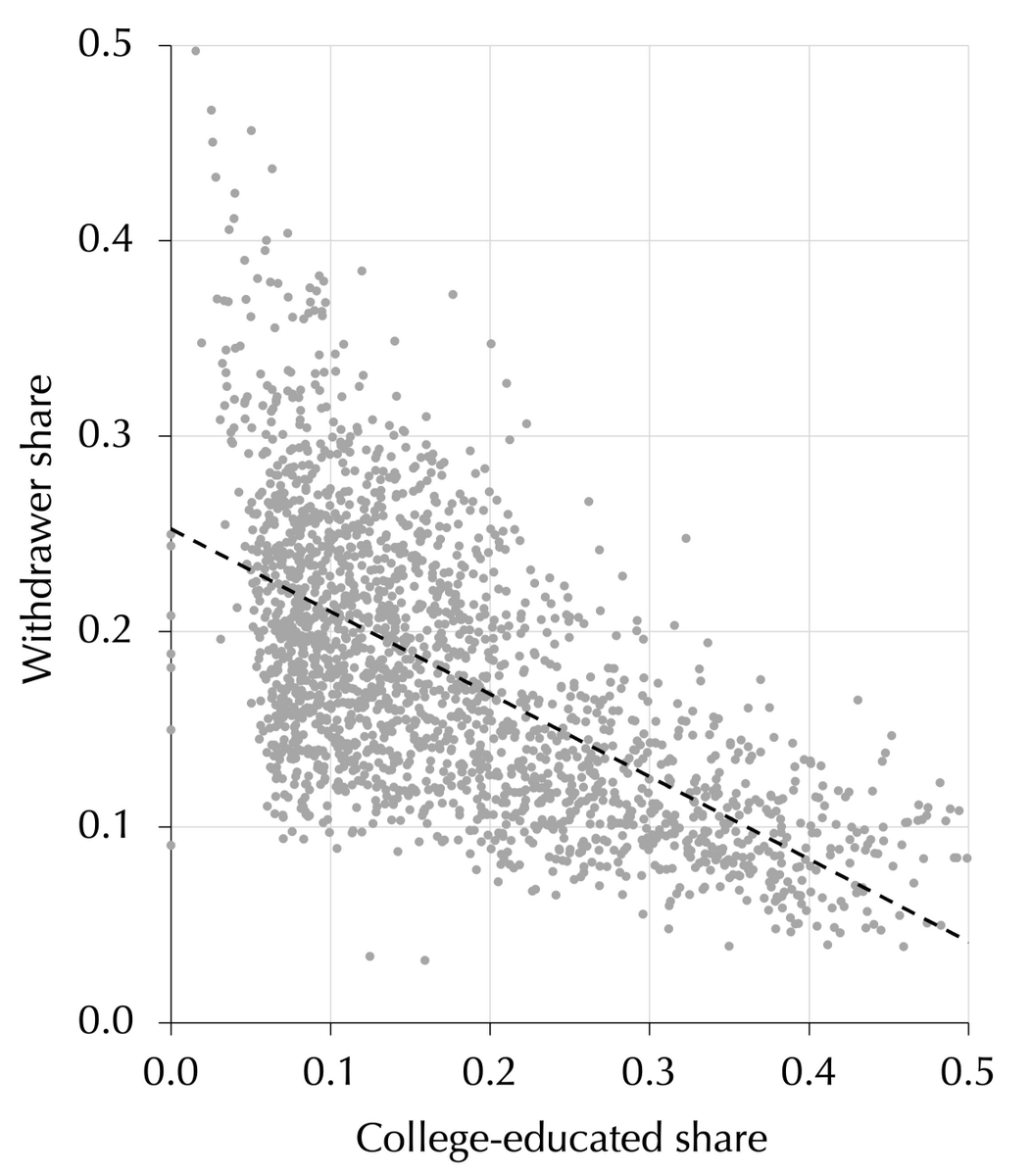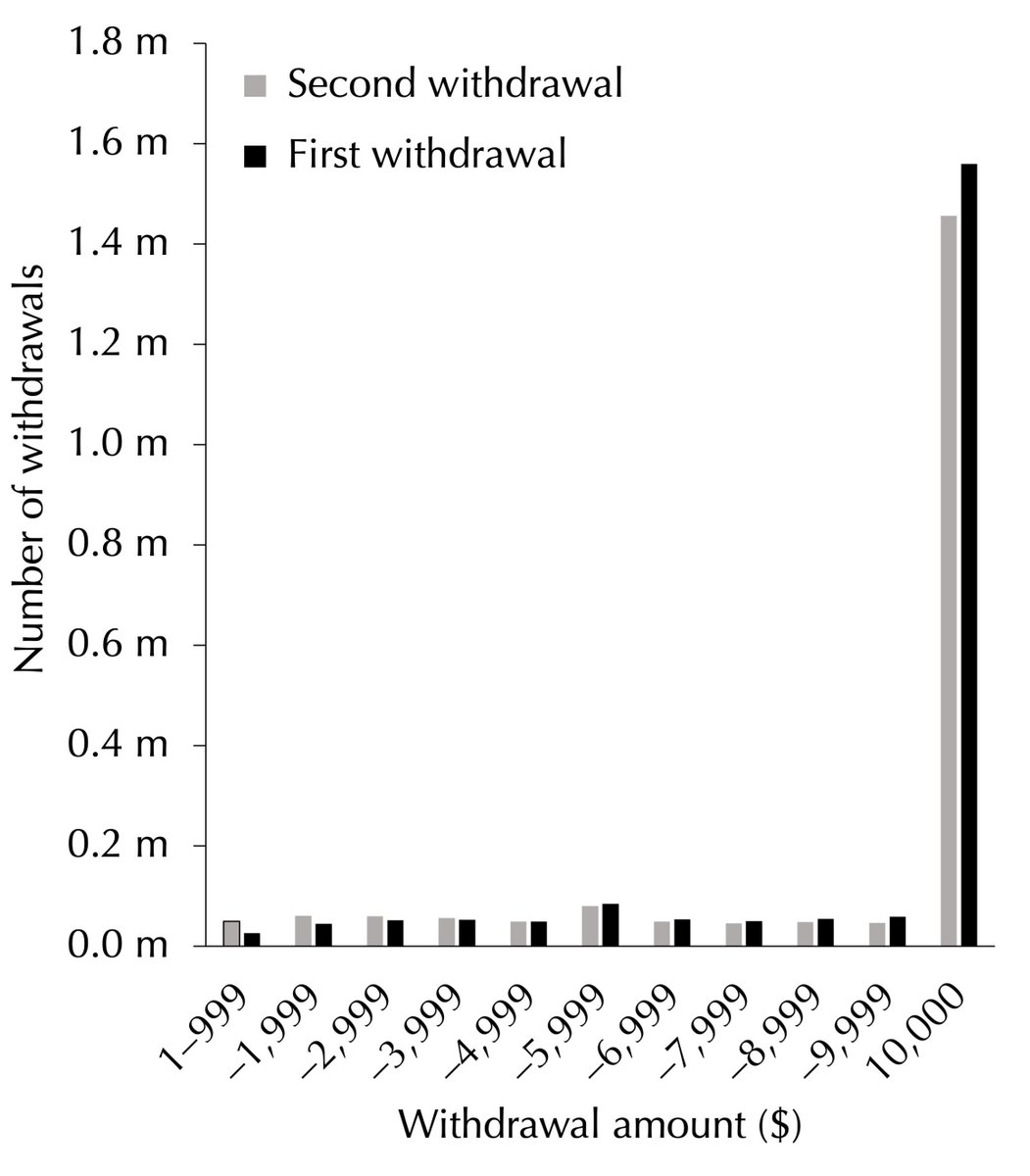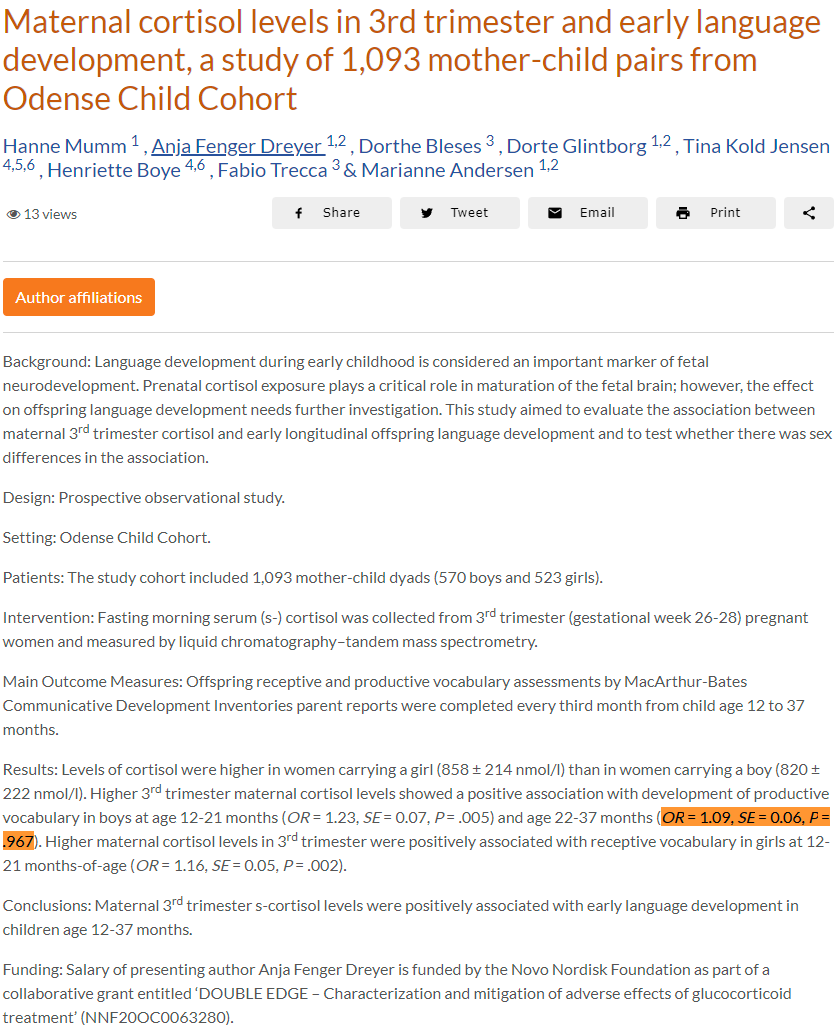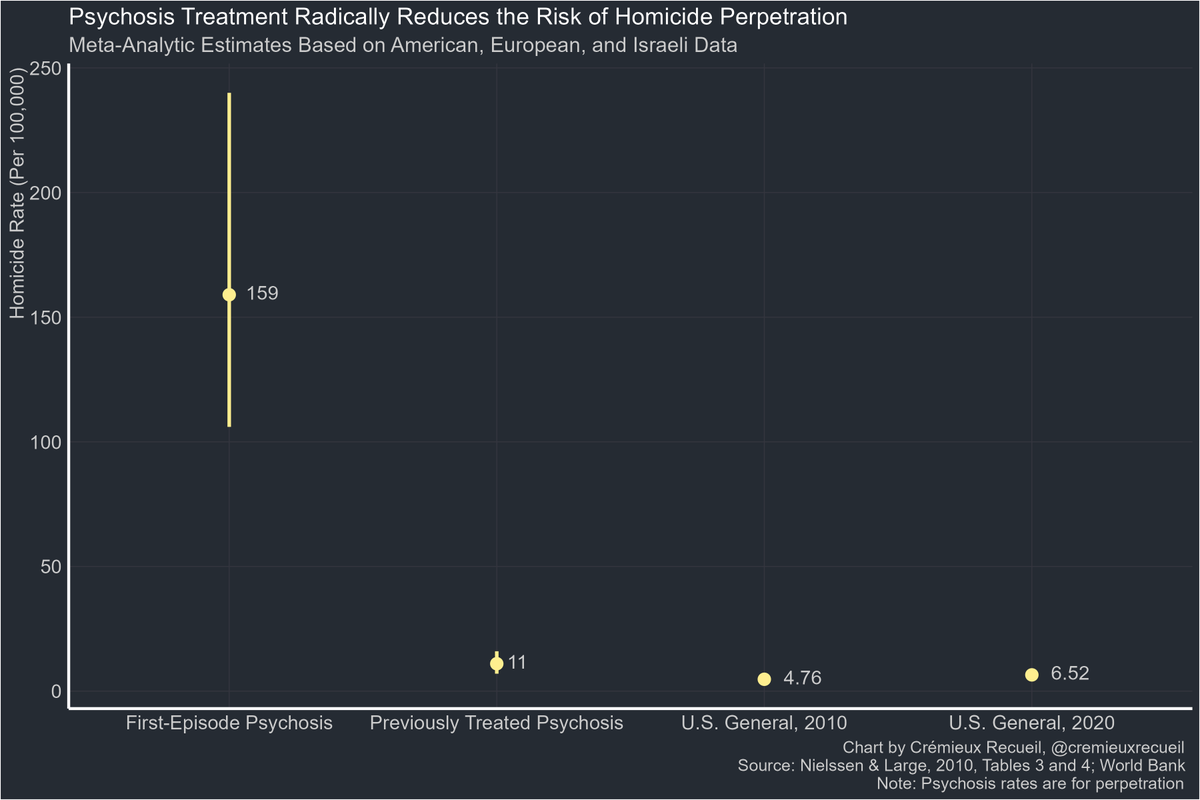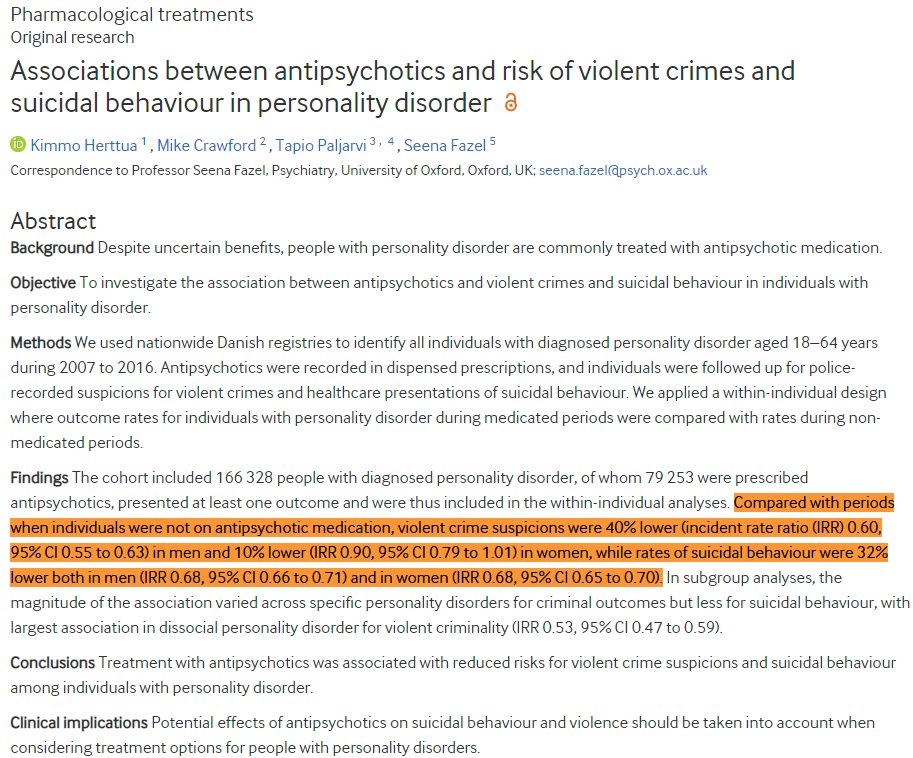Accounting for selection into disadvantaged neighborhoods, the effect of neighborhood disadvantage on the likelihood of committing a violent crime is nearly nullified.
The cross-sectional effect and the causal one do not match because neighborhood effects are largely selection.
The cross-sectional effect and the causal one do not match because neighborhood effects are largely selection.
https://twitter.com/cremieuxrecueil/status/1661894011831869441
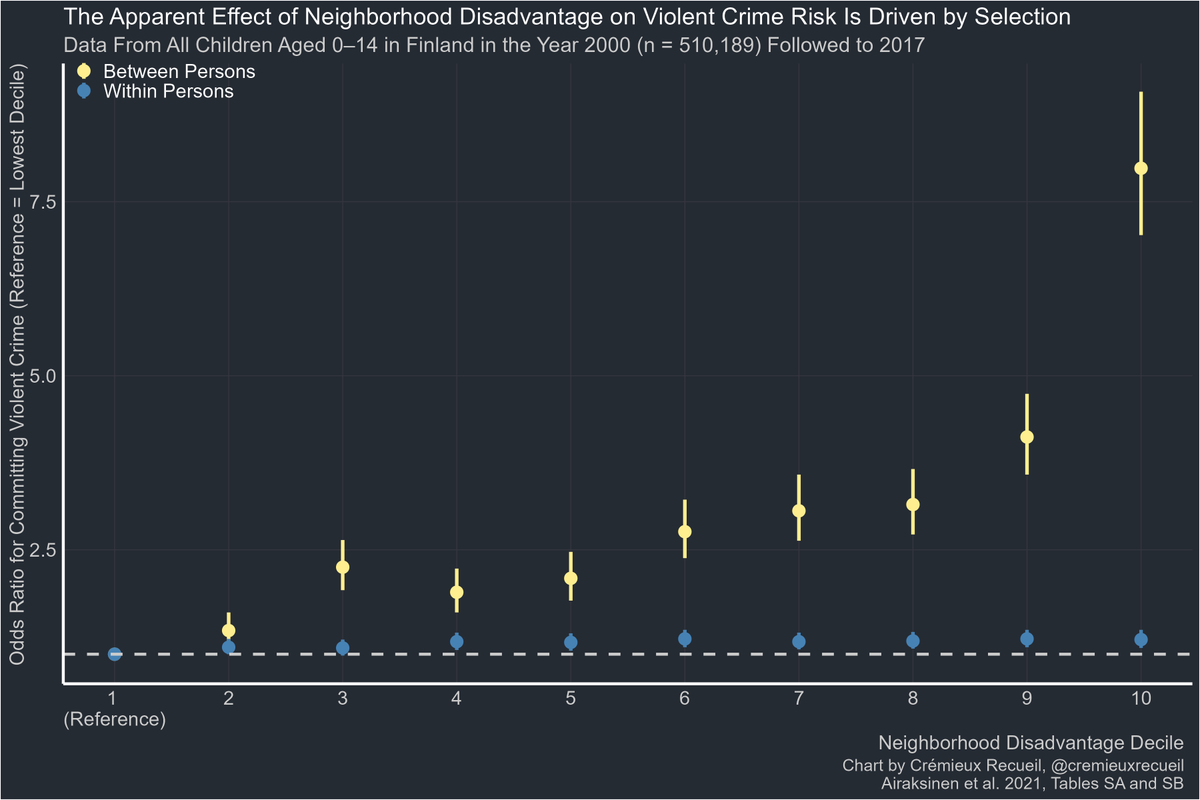
The same is true for property crime.
Your neighborhood's poverty and crime rates do not seem to drive your own risk of committing a crime.
Your neighborhood's poverty and crime rates do not seem to drive your own risk of committing a crime.
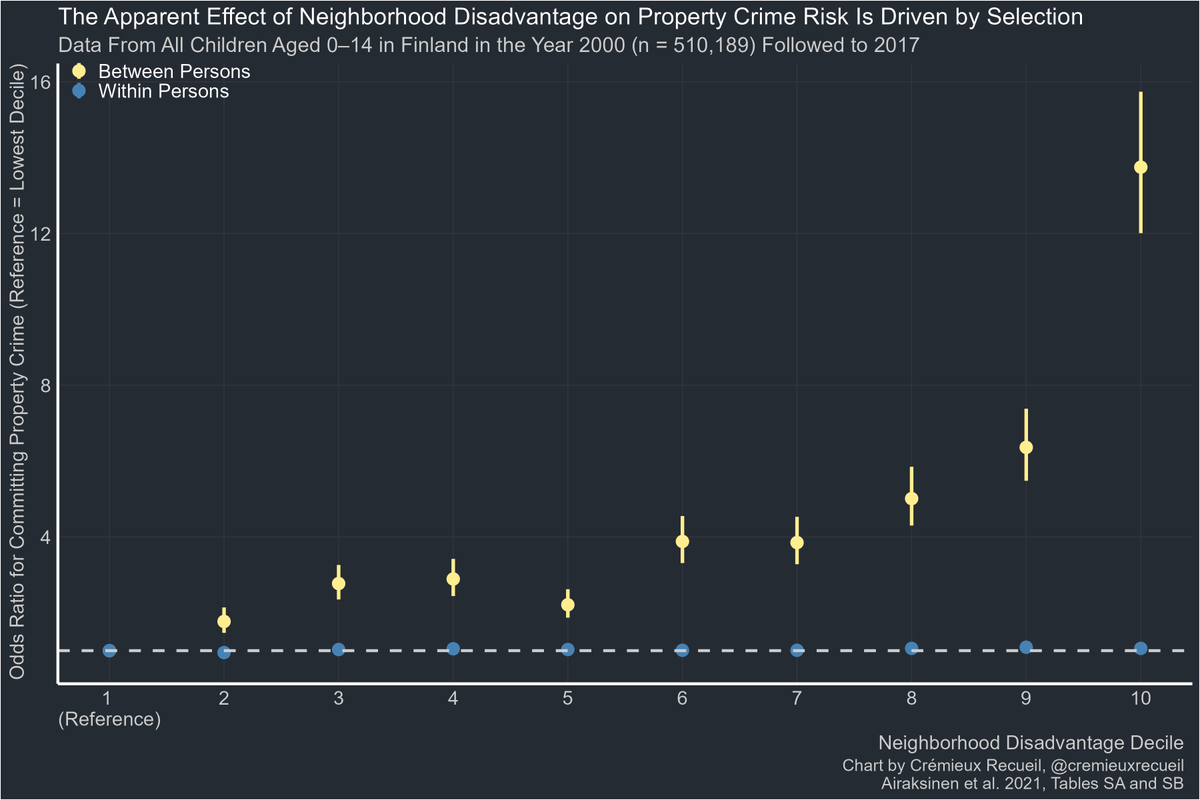
The within-person results for violent crime showed a peak odds ratio (1.22) at disadvantage deciles of 6 and 9. For property crime, the peak OR was 1.09 in decile 9 and it was p = 0.05. For other crimes, it was 1.08 in decile 10 and it was marginal (95% CI: 1.01-1.16).
Account for multiple comparisons and the within-person results all disappear.
Neighborhood effects are about selection more than they're about neighborhoods affecting people.
Source: sciencedirect.com/science/articl…
Neighborhood effects are about selection more than they're about neighborhoods affecting people.
Source: sciencedirect.com/science/articl…
• • •
Missing some Tweet in this thread? You can try to
force a refresh

 Read on Twitter
Read on Twitter


